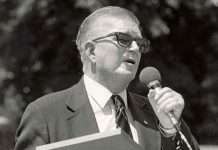There’s more to tennis than meets the eye. Take the forehands of the top two players in the world. Both Roger Federer and Rafael Nadal put oodles of spin on the ball (a combination of top spin and side spin). The shots may look similar, but Rafa’s lefty, shockwave of a forehand averages 3,200 RPMs, while Federer’s registers 2,700 RPMs. That’s a 20 percent difference — important stuff when you’re measuring the difference between great and greatest, and just the kind of stuff that keeps John Yandell up at night.
“Tennis happens too fast for the human eye to perceive,” says Yandell, the impetus behind San Francisco-based TennisPlayer.net. “If you understand that, it gives you perspective for understanding why no two tennis coaches ever agree on everything, why there’s so much discussion, controversy, misstatement of fact by knowledgeable people. It’s an issue of the limits of human perception.”
Consider this: the human eye films at about 20 frames per second. Meanwhile, a tennis ball is on the strings of a racket for about 1/250th of a second. That means tennis happens more than 10 times faster than we can see it.
Yandell, a pioneer in the somewhat ambiguous field of tennis research, has spent the past decade breaking down the strokes of the sport’s top on-court achievers using high-speed filming, a scientific approach that, at first, seemed a bit too esoteric for the tennis masses to digest. He was clearly ahead of his time. But folks are finally catching on, as evidenced by recent articles in Time, Men’s Journal and the New York Times Magazine that touch on Yandell’s efforts.
“What you’re seeing is an increasing awareness that really understanding the game requires studying it through another medium than just your eye,” he adds.
Yandell and his associates have built up a comprehensive database of some 45,000 high-speed clips of more than 65 of the world’s top players that gives coaches, commentators and even weekend warriors an opportunity to see what’s going on in critical moments of a stroke. He’s built relationships with the USPTA, LTA, Tennis Canada, Croatian Tennis Association, New Zealand Tennis and Tennis Ireland, etc., and hopes the site will continue to develop into a forum in which elite-level coaches exchange ideas and insights. He’s literally changing the way we view and teach the game. An example: when Carlos Rodriguez decided to tweak Justine Henin’s serve and forehand, he studied Yandell’s high-speed video of the Agassi forehand and the Sampras serve. Henin subsequently went from having an inconsistent serve to developing one of the more effective serves in women’s tennis, while also building a monster forehand. But it only happened when, using high-speed video, Rodriguez picked up the nuances his naked eye couldn’t possibly have perceived.
Which brings us back to Nadal’s ferocious forehand. By closely studying Yandell’s video analysis, we noticed something interesting: what makes it so special isn’t necessarily those RPMs alone, but the fact that the Majorcan manages to put so much spin on the ball and still match (or better) his competitors’ pace. All we had to do was open our eyes.
Or have them opened for us.
“When I started teaching, I quickly realized I didn’t know what I was talking about,” quips Yandell, who, before he delved into the high-tech world of video analysis, was a garden-variety teaching pro. “Pros and coaches are constantly referring to what top players do. I realized some of it may be true, or it may not. I hungered to understand that of which I was talking about. I didn’t see how I could pontificate on how to hit a tennis ball if I didn’t know myself. That drove all this.”


















